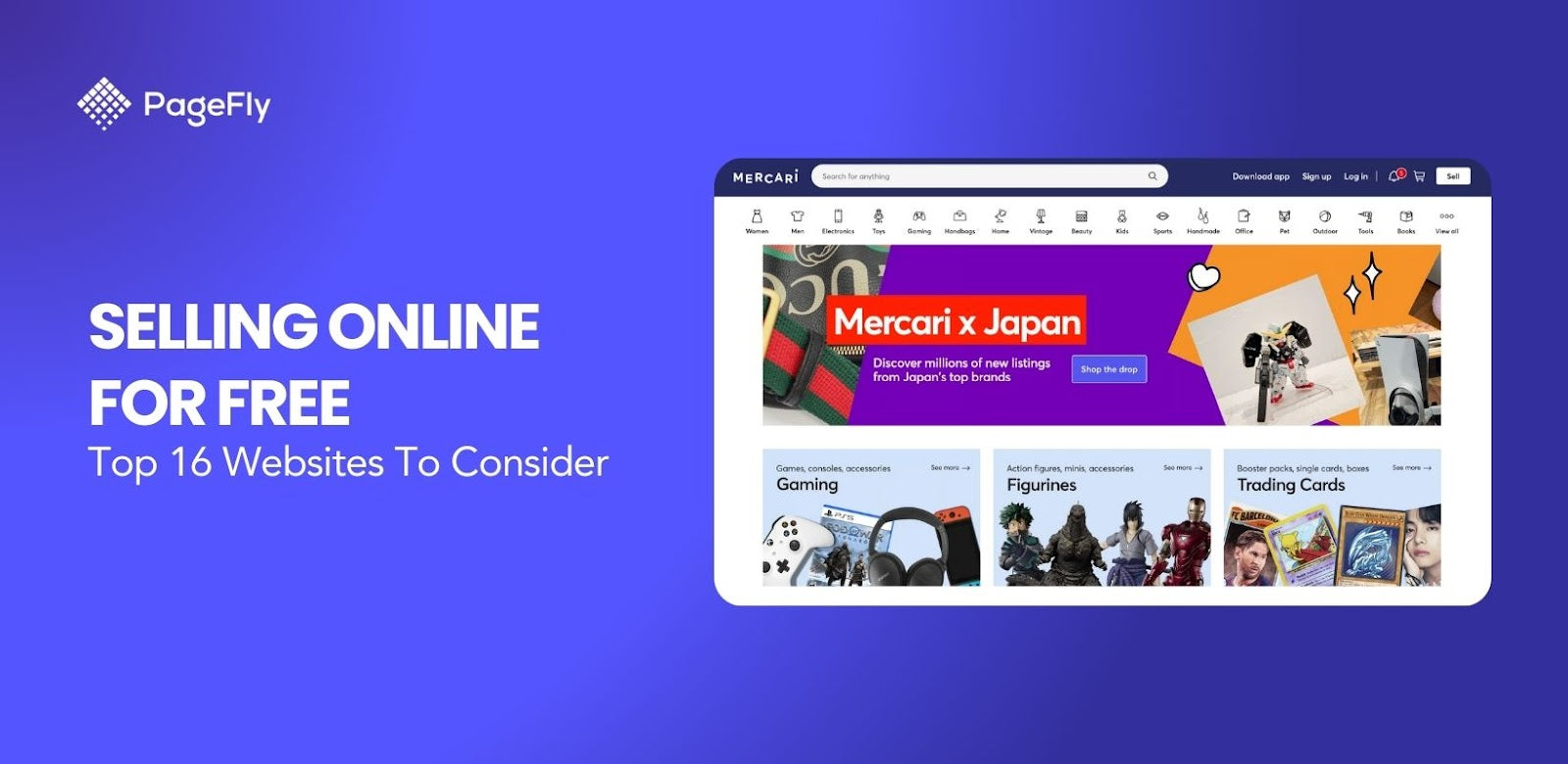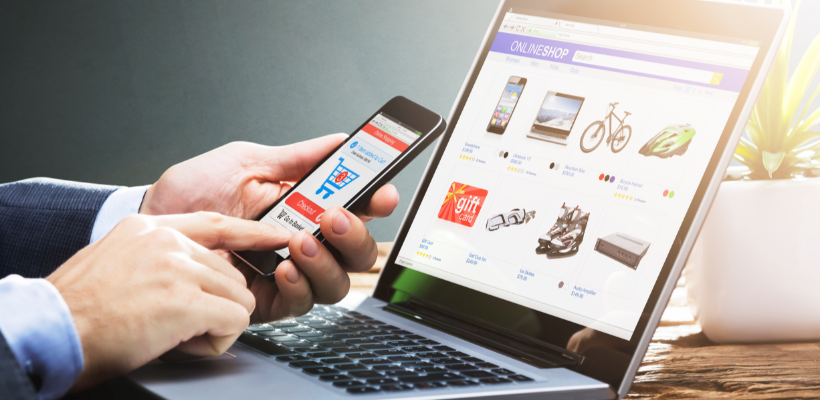The era of technology has led to a significant increase in involvement in eCommerce activities. And Omnichannel Retailing Strategy is recognized as the most effective solution that can solve the difficult problems that retailers nowadays are facing.
Today, customers can experience those on their multiple electronic devices including computers, tablets, smartphones, or even smartwatches. A Google study shows that about 90% of individuals hop between digital devices every day, using an average of three devices to perform their work.
In addition to trade transactions implemented via various digital channels, the essential activities that retailers use to maintain their online store like marketing, networking, and nurturing also became extremely important. Thus, the implementation of an Omnichannel Retailing Strategy gradually becomes more and more necessary for almost all businesses.
Kindly follow this article to get more understanding of omnichannel and how to establish an omnichannel retail strategy for your digital business!
Understanding of Omnichannel Retailing Strategy

Omnichannel describes the way businesses execute to provide customers with consistent and smooth shopping journeys across all their commercial channels and devices.
Besides omnichannel, single channel or multichannel are also commonly-used business methods of retailers. So, let’s be aware of some typical features of omnichannel compared to the other two.
Single channel
- All shopping experiences are provided to customers through only one channel like a brick and mortar store or a retail store on Facebook.
- Currently, single channel development is considered weak and outdated because it’s no longer suitable to keep up with market demand and the advancement of technology.
Multichannel (Multiple Channels)
- Businesses are operated on multiple separate platforms to focus on the brand. All channels have different ways of serving customers or each channel may be used for different purposes. For example, a retailer is operating email, a blog website, a physical store, and a promotion SNS
- Building a store in the direction of multichannel will take a lot of time and effort to keep each channel running smoothly and sustainably.
Omnichannel
- This is the optimization and unification of all purchasing, customer support, and marketing activities for all channels including stores, digital platforms, and electronic devices.
- Omnichannel strategies focus mostly on customers. Most retailers these days concentrate on approaching and developing an Omnichannel Retailing Strategy because of its seamless customer orientation and consistency.

Compared to marketers who used a single channel, the increase in order rate of those who used integrated multiple channels was 494% greater in 2022.
Omnichannel Retailing Strategy helps retail businesses to enhance the shopping experience of customers by improving both sales and marketing channels.
Key Benefits of Omnichannel Retailing Strategy

Increase Customer Satisfaction (customer engagement & customer service)
Enhancing customer satisfaction may result in more loyal customers, repeat sales, and effective word-of-mouth advertising.
Additionally, customer satisfaction may help to increase sales and income since satisfied consumers are more likely to come back to the store again and refer their friends.
According to Omnisend research, Omnichannel schemes could make client retention rates of a business 90% greater than those who don’t adopt this strategy.
A successful omnichannel retail strategy will easily lead to an increase in customer fulfillment and happiness as customers can access the retail stores via their preferred channels to enjoy shopping anytime and anywhere they want.
Based on a recent survey conducted by Aspect, firms adopting omnichannel strategies get 91% higher yearlong customer retention rates than those that do not use this strategy.
Boost Brand Awareness
In recent years, there’ve been significant changes to the internet shopping experience. Consumers tend to trust reputable and popular online stores across multiple platforms. However, the synchronization in the content and activities of the stores plays an important role in the credible image of a retail brand.
The omnichannel approach can help to transfer all messages of a business constantly on various channels such as emails, mobile apps, and social media platforms.
Your brand will become more visible and customers will have the option to engage with you wherever they like if you provide a smooth experience across all of these applicable channels.
One of the retail companies that have used omnichannel strategies and successfully captured the attention of consumers is the giant in luxurious fashion - Burberry.
The brand has been extremely victorious in distributing limited edition products of the "Series B" product line on the popular social media platform Instagram within 24 hours.
The success of this campaign largely came from the interest and awareness of new and young customers of Gen Z and millennials, aka the group of people who regularly use social media platforms for many purposes.
Leverage Data Analysis

Omnichannel experiences also support retail businesses in gaining customer-related data and business insights more easily such as customer behavioral data and sales statistics from all channels.
Good data analysis will better the decision-making process. If marketers obtain and process the essential customer data, they can get more understanding of every touchpoint in customer journeys in order to plan ahead several marketing campaigns or improve customer experience across multi-channels.
Generate Competitive Advantages
Gaining a competitive advantage may boost sales, profits, and company expansion. Retailers will have a chance to boost their business and put themselves in a better position for long-term success by becoming more unique than their competitors.
An omnichannel retail strategy can create competitive advantages by addressing customers' demands and preferences in diverse methods that rivals cannot. Retailers may set themselves apart from competitors and establish a solid brand image by offering personalized and seamless
experiences and paying attention to data management.
5 Steps to Implement An Omnichannel Retail Strategy
Step 1. Define Your Strategy
- Determine the goals of the Omnichannel Retailing Strategy, such as boosting sales and customer happiness.
- Describe the ideal customer experience for all channels and touchpoints.
- Decide resources needed to carry out the strategy, namely, infrastructure, technology, knowledge, and skills.
Step 2. Integrate Channels
- Connect data systems across all channels to give customers a consistent and seamless experience.
- Utilize technology to consolidate all touchpoints and channels and provide a compatible and customized shopping experience.
- Implement inventory management across all channels to guarantee that customers can receive accurate and updated information about product availability.
Step 3. Personalize the Shopping Experience
- Get consumer information from all touchpoints and channels to optimize the shopping experience.
- Employ data analytics to evaluate client data and personalize products and services to particular customer requirements and preferences.
- Utilize customization technologies to deliver more interesting and appropriate purchasing experiences, for example, recommendation systems and personal shopping assistants.
Step 4. Optimize the Logistics
- Optimize the supply chain by streamlining procedures across all channels and touchpoints.
- Enhance inventory control to decrease overstocking/stockouts and boost product availability.
- Adopt convenient and various delivery methods such as shipping from the store and picking up at the store after their online shopping to maximize efficiency and speed.
Step 5. Measure and Optimize
- Gather data on consumer behavior, sales, and other key indicators to assess the performance of the Omnichannel Retailing Strategy.
- Analyze data to identify problems and improve your strategy.
- Update the omnichannel retailing approach constantly to remain competitive and to satisfy the demands and preferences of customers.
3 Tips on Growing A Successful Omnichannel Strategy
1. Optimize Mobile Experience

An eMarketer survey found that 45% of customers prefer to buy online, in store, or through smartphone apps. As a result, businesses must deliver a unified consumer experience across all platforms.
Furthermore, the need for seamless integration increases along with the number of touchpoints including SNS advertisements, digital notifications, chatbots, and email newsletters. Yet, these touchpoints now often appear on the same channel - smartphone/mobile device.
Plus, customers also tend to pay or scan QR codes to find out information about products such as origin and features right on their smartphones. Therefore, it's something worth making sure the mobile experience is comparable with other channels by applying identical branding, message, and design.
Starbucks and The Home Depot are two prominent names in providing the perfect mobile shopping experience for customers.
With the useful Starbucks mobile app, customers can place food and beverage orders, pay for their purchases, and even tip their baristas.
And The Home Depot's mobile app improves the in store experience by providing QR and bar codes that consumers can use to check reviews and get to know about products and services.
2. Reinvigorate Technology
One of the most crucial things that businesses should be aware of to stand out from the competitive crowd is upgrading their technologies.
In terms of the omnichannel experience, the first thing to be considered is an integrated payment system. Retail businesses should have a consistent payment system so that consumers can comfortably experience shopping anytime and anywhere.
A point-of-sale system (POS) like Clover or Lightspeed is always a solution to the above issue. With this resort, retailers can not only manage their finances and revenue better but also control inventory and order information across touchpoints conveniently.
Having a POS system also helps to increase customer experience such as saving their payment information, memorizing their passwords, and recommending relevant items.
Moreover, the application of virtual technology in retail business might also become a great advantage. Virtual technologies like AR or VR will definitely make customers’ experiences at a store more intriguing and effective.
For instance, an apparel retailer could let customers use a VR device to check if a design suits them without having to try on clothes in a fitting room.
There are certain straightforward possibilities for AR/VR that make sense and provide a decent return on investment (ROI), especially in field service and maintenance.
As reported by Capgemini research, 82% of 603 organizations firms applying VR/AR to their business stated that VR and AR technology helped them achieve the intended outcomes higher than expected.
Whereas, about 50% of the companies who also took the survey and haven't used VR/AR yet said they plan to adopt these innovations sometime in the next three years.
3. Understand Customer Thoroughly

In fact, in business in general, you must always have a holistic picture of the customer. Since customer expectations can change according to trends, time, or sales channel, it’s absolutely necessary for any omnichannel company to use a data analysis and control system.
CRM systems/software, such as ZOHO and HubSpot, are the saviors in this regard. CRM platforms will help you quickly collect existing and potential customer insights from all channels of your business. Also, they can analyze data deeply, such as customer behaviors and customer preferences, to support the creation of solutions related to sales and marketing.
If you are owning a Shopify store, please also check out the Shopify Page Builder apps like PageFly. PageFly will help you not only create fascinating but also manage your data thanks to the analytics feature.
Gamers worldwide are surely familiar with Activision as the company creating many fantastic video games like Call of Duty and Crash Team Rumble.
In order to track social media conversations that are connected to their goods, Activision activates Marketing Cloud and then uses Service Cloud to keep an eye on such discussions.
Examples of Effective Omnichannel Retailing Strategy
Apple
In 2001, Steve Jobs switched his focus to traditional brick and mortar retail with the opening of the first Apple store after the start of its online store in 1997. Apple is recognized as one of the pioneers in omnichannel retail strategy. This is a fantastic model of how a brand ought to establish and behave across platforms.
Today, customers are able to receive their purchased Apple items of curbside, by delivery, or in store. Besides, all of these channels provide access to Apple experts who may provide assistance, guidance, and tip sharing.
Consumers may readily explore items online before visiting the brick and mortar store to test them and make purchases. Apple's physical stores are set up mainly for customer experience using its products rather than being created to increase sales.
As the visual experience is the same throughout all of their platforms, the image brand and merchandises of Apple are easily distinguishable.
Also, Apple has completely altered how American customers access and enjoy music by implementing the omnichannel approach for its iTunes collection.
To give an example, Apple made it possible for users to combine playlists across devices, creating a futuristic experience and increasing customer engagement. All iTunes user actions are tracked and analyzed to probably understand and describe customers’ music choices then the app may suggest music that closely matches user preferences.
Sephora

Sephora has really become an outstanding winner in implementing omnichannel retail strategy even in the Covid-19 period. This retail brand has been mostly focused on developing the customer experience as well as updating and applying technology.
Sephora develops an omnichannel strategy that links its customers’ online shopping experience and the in store experience. When visiting Sephora physical stores, customers can participate in free make-up classes and access their "Beauty Bag" account to get more product details while going shopping via in store tablets.
Other than that, AR and Color IQ technology is also provided to customers using Beauty Bag to virtually try on Sephora products. When visitors find anything they like, they can totally add it to a wish list and use the app to buy everything on that list.
Additionally, the smart chatbot of Sephora is also an AI-powered staff who can greet and professionally recommend suitable products to customers. It also offers lots of beauty and cosmetic advice in order for visitors can enjoy their shopping journey without coming across as pushy salespersons.
Orvis

Orvis a good example of a sports item retailer that has successfully applied omnichannel approach. Orvis knows how to communicate with its targets properly after getting a full understanding of them.
Having realized that the target customers love to experience innovative eCommerce technology, Orvis equipped many CRM-integrated tablets at the physical stores so that customers can go online shopping easily or understand more about the details of the products.
Thus, the CRM functions on tablets can help the company to obtain customer-related data and manage product stock instantly even though customer purchase products at stores. Also, it can assist the staff members to identify loyal consumers as soon as they enter the stores.
Conclusion
All in all, promoting an Omnichannel Retailing Strategy is essential and advantageous for most retailers today because of the consistency and customer centricity across multiple channels.
Figuring out which sales channel your customers use the most frequently for their shopping experience is the very first step to setting up an omnichannel strategy. After that, develop plans to integrate those channels as well as to enable your customers to make transactions via any of them.
If you’re the owner of a Shopify retail store, don't forget to check out our website to step-by-step optimize your store website and marketing campaigns across digital channels.









![14 Profitable Small Food Business Ideas for 2025 [Real Numbers]](http://pagefly.io/cdn/shop/articles/1_58b587d2-13db-4aa6-8c19-e40f5c88d3eb.jpg?v=1758255771&width=4460)
![Art Business Names: 350+ Ideas + Free Generator [2025 Updated]](http://pagefly.io/cdn/shop/articles/art_business_name_e94a54e9-d325-4ba3-94ab-7b4297952312.png?v=1760062968&width=1640)







